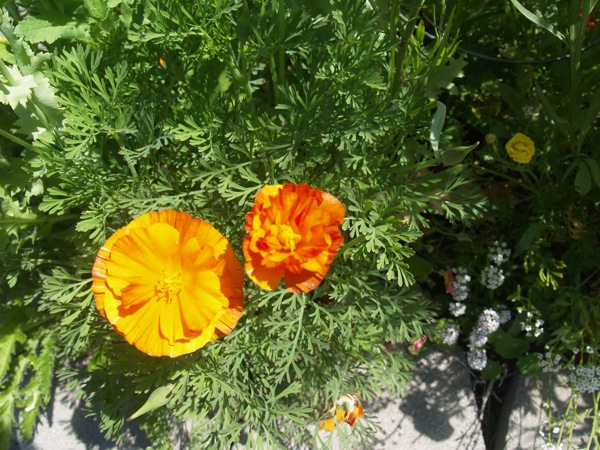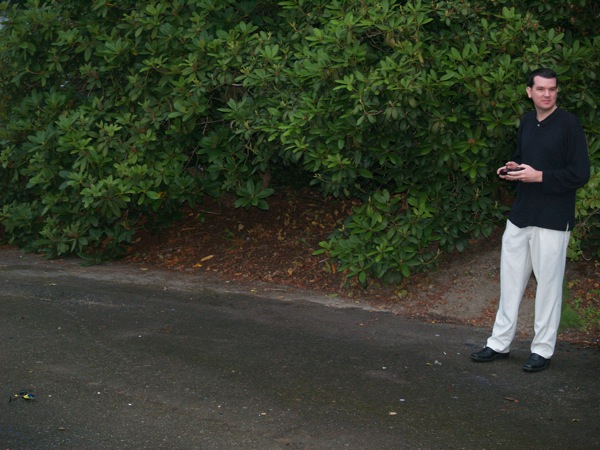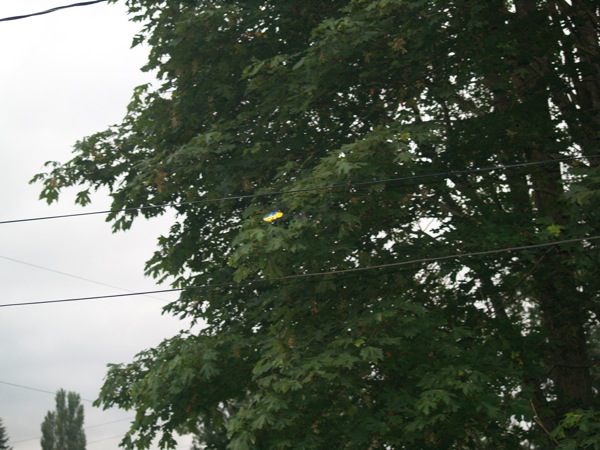This has been a long running thought process for me, mostly based on my concerns about my own diet and where the country is going in terms of food production and consumption.
A few months ago we caught the tail end of Jamie Oliver’s Food Revolution. It was a wrap up show about Jamie Oliver’s attempts, over several weeks, to improve the basic nutrition and food education that was happening in a relatively impoverished elementary school in West Virginia. The kindergarten students that Oliver was interacting with hadn’t been able to identify which vegetable tater tots are made from. They knew tater tots, no problem, but where they came from? No idea.
Horrifying.
And horrifying on several levels.
First on a linguistic level — a five year old hasn’t heard the word “potato” enough to be able to parse “tater” from that?
And second, and more disturbing, a five year old living in modern America is sufficiently unfamiliar with whole vegetables that they are unable to identify a potato when it’s shown to them?
Yikes!
I know for a fact that when I was that age I could have told you which vegetable a tater tot came from. Probably couldn’t have told you what a tater tot WAS, but I could have parsed out “tater” from “potato” and made an educated guess.
And anticipating Andrew’s scorn at what is for me a personal point of pride, that is, that I’ve never eaten a Hostess Twinkie, I will admit that the food I grew up eating was far, FAR different than that which my peers were eating. I’ve never had a slice of Wonder bread either.
So I grew up eating weird stuff… whole wheat bread, raw vegetables, fruit that wasn’t FROOT, oatmeal that didn’t come in a package, cereal that didn’t turn colors when you added milk, and milk that wasn’t chocolate.
I didn’t appreciate it at the time, I wanted desperately to be eating the same stuff that the other kids were eating, but I do appreciate it now. The fact that I grew up eating real food instead of synthetic has doubtless made a lasting impact on my development and my health as an adult.
And it’s a shame that in many (in most?) circles what I ate as a child would be considered “weird”. Absolutely outside the norm, yes, but what about a green pepper is more strange than, say, those horrid little “Froot Gushers”, those weird little clots of bright primary colored paste that squirt globs of tooth rotting goo when you bite them?
Why was my peanut butter on whole wheat, carrot sticks, and apple lunch “weird” when the baloney on paste board with a package of Twinkies was “normal”? And why is it now something of note when I eat hummus and flat bread with fresh vegetables for lunch and whole fruit for a snack? My fast food, Lean Cuisine (ergh! Nuked plastic!), Goldfish cracker and M & M snarfing co-workers are always astonished by my lunches. As I am, in my own way, of theirs.
Which brings me to the title of the post.
What do you buy at the store?
Andrew and I have had an ongoing discussion for several years now, the duration of the conversation being so long only because we only seem to have it when we’re shopping for food, about our grocery purchases versus those of the people around us. And we have decided that what we purchase to fuel our bodies isn’t food, it’s ingredients. The vast majority of what goes into our shopping carts is something that is going to be a part of something else, not a meal in and of itself. That, I think, is the problem. Too many people have too many opportunities to purchase STUFF that they can just shovel into their mouths to satisfy a hunger that they probably don’t even have.
Cooking takes time and those of us that work full time, to say nothing of those who are holding down jobs and raising kids, have little of it to start with. But I’m proud of the fact that we purchase ingredients. And if turning those ingredients into something that is pleasant to eat takes up my free time, I’m willing to make that sacrifice. I just wish I wasn’t preaching to the choir. Wanna come over and cook with me some day?
 Uncle Andrew
Uncle Andrew



 Margaret
Margaret






